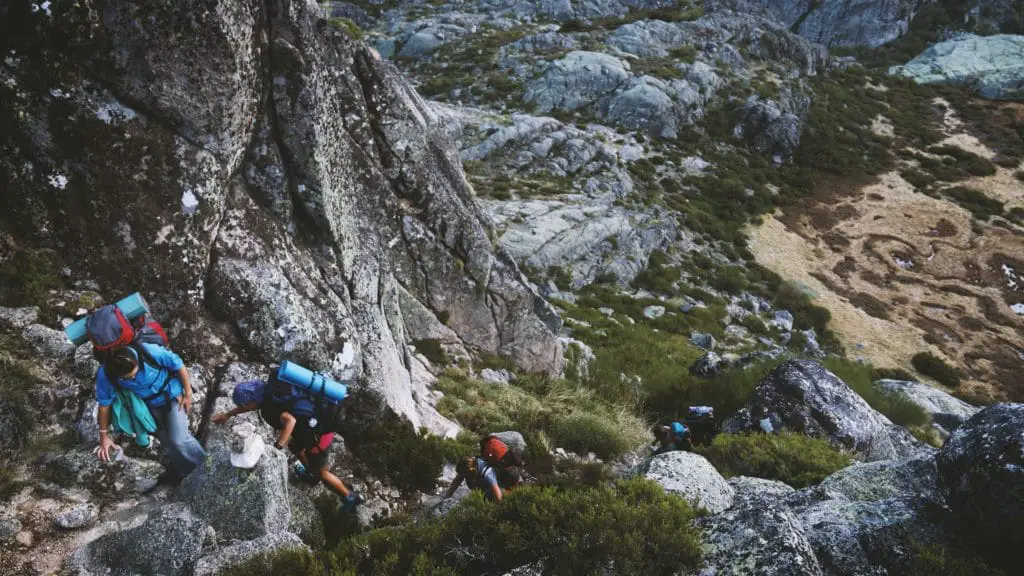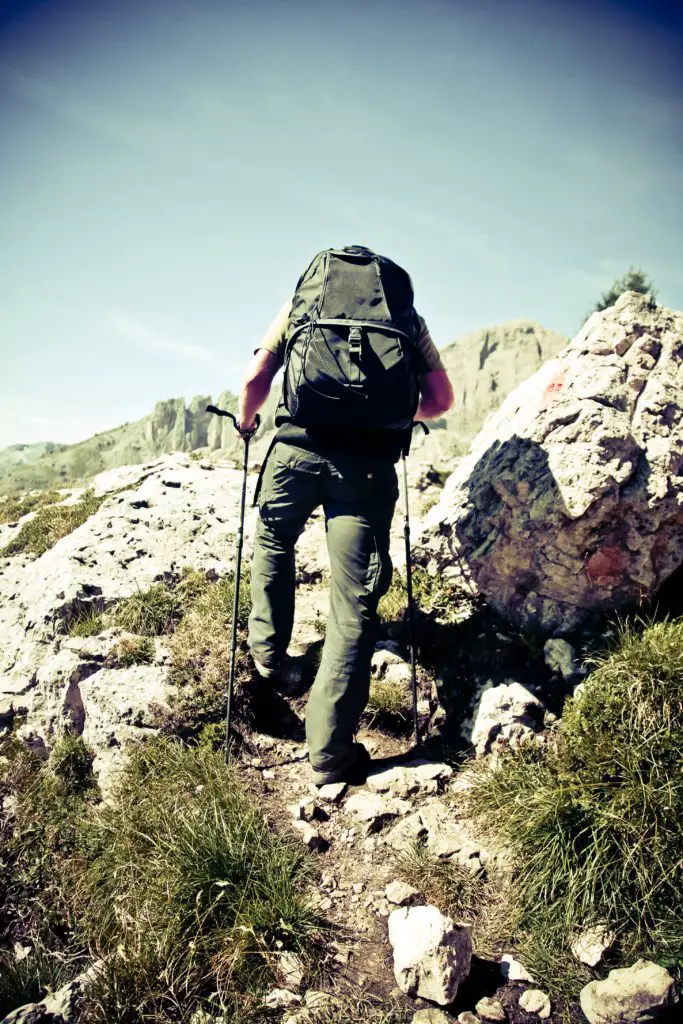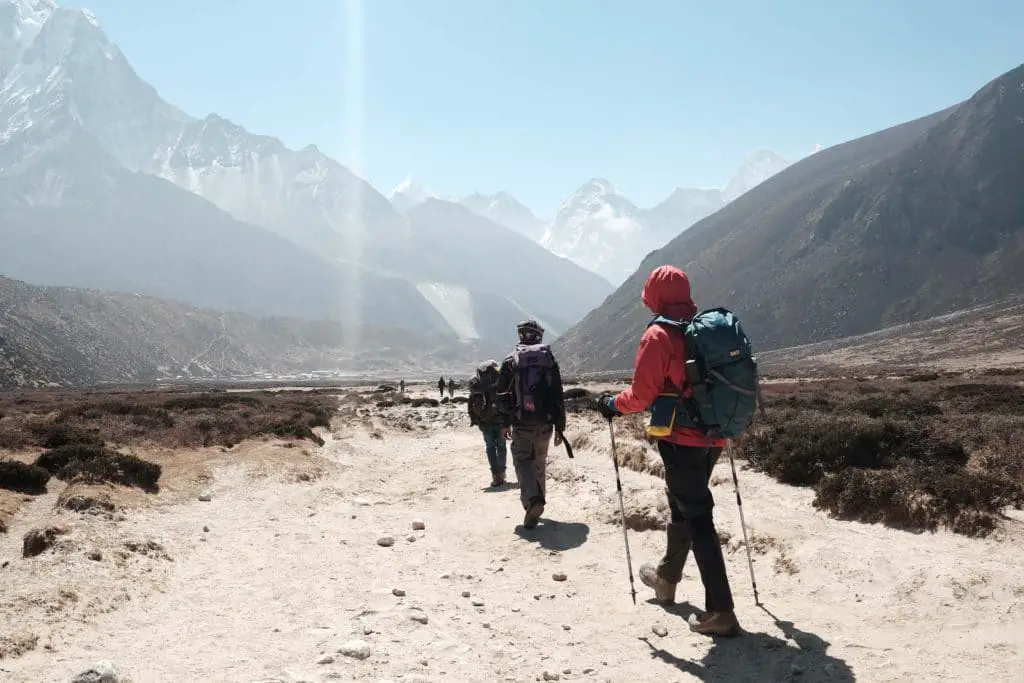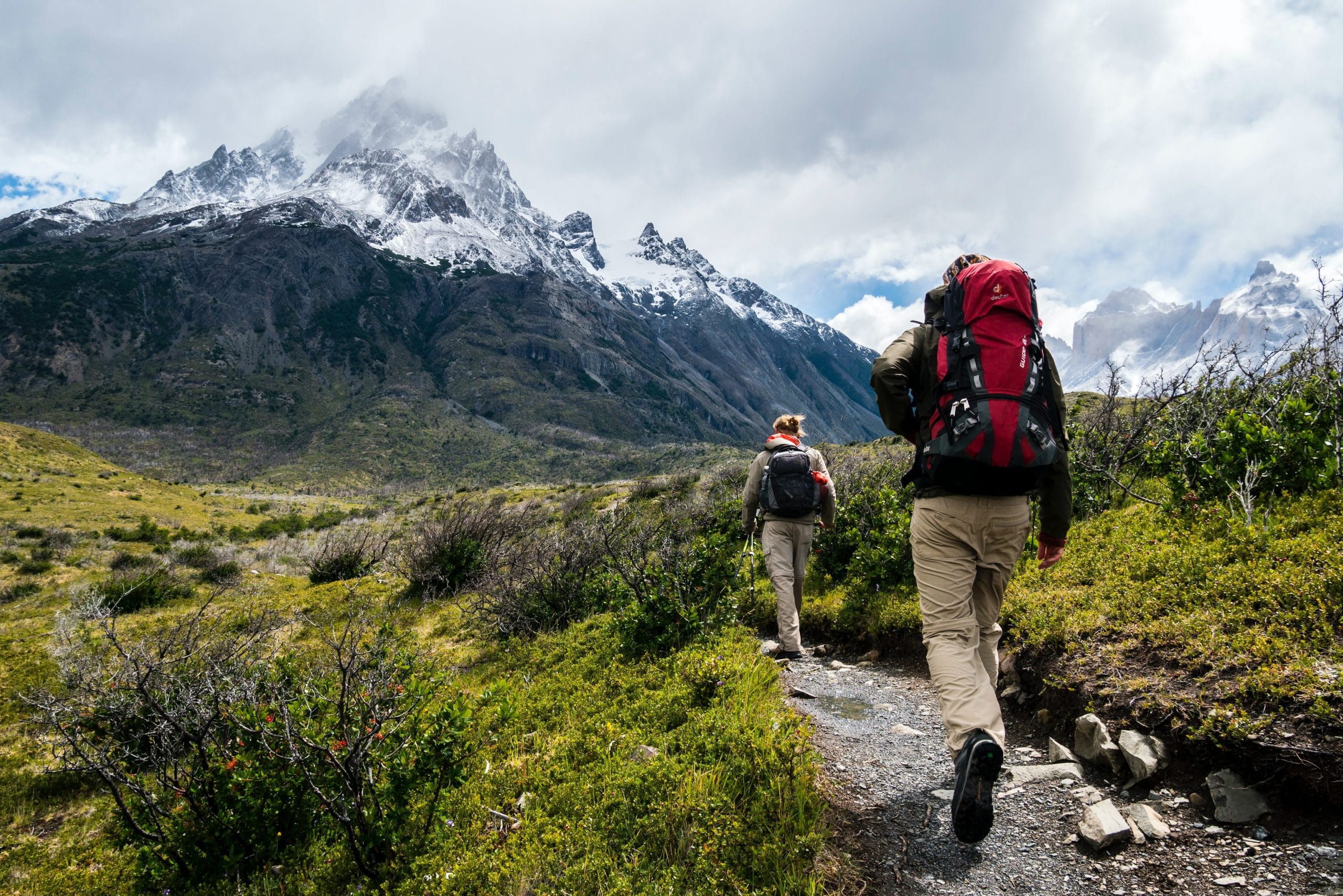Hiking is such a great lower body workout because hiking on an incline activates so many of your muscle groups. Everything from your glutes down needs to work to keep you going up those hills and down the other side.
Here we will describe how your muscles are working while you hike, as well as give you tips for recovery afterward and an explanation about why hiking is good for weight loss.
Table of Contents
What Muscles are Engaged When Hiking?

Six main muscle groups are at work when you are hiking. You can count on your abs and glutes to support the work of your hip muscles, quads, hamstrings, and calves when you hike on an incline and back downhill.
Glutes
Your glutes (gluteus) are engaged when you are climbing uphill. They help propel your lower body forward and aid with hip extension. They also support your lower back and torso and help you hold up the weight of your pack.
Hip Muscles
Your adductors, abductors, and hip flexors are active when your quads and hamstrings are working to propel you up those hills. They also support your lower back and help you absorb the shock of each step (and the added weight of your pack).
Quads
Your quadriceps are the strong muscles that stretch from your hips across the tops of your thighs to your knees. These muscles push you forward as you drive your knees. When you extend your legs going downhill, your quads are working harder.
Hamstrings
Your hamstrings are the ones that stretch along the back of your thighs. They act opposite to your quads. When your body is moving forward, your hamstrings pull the quads back.
Calves
Hiking on an incline engages your calves (on the back of your lower leg) even more than walking. They are active during the entire hike to bend your feet into action and power you up those hills When you hike downhill, your stabilizing muscles and tendons near your ankles need to work hard.
Abs
Your abdominal muscles support your core and lower back. The stronger your ab muscles, the less likely you are to have a back injury when hiking.
Does Incline Hiking Build Butt Muscle?

Yes. During your hike, your glutes support your body weight and the weight of anything you are carrying.
Your butt is getting a workout when you hike and will grow stronger the more you hike and the bigger the incline you attempt.
Incline hiking in particular is great for building butt muscle because you have to work harder to propel your body forward up an incline.
Your butt will do a lot of the work to extend your hips and lead the charge in moving your lower body onward.
Your gluteus maximus is the strongest muscle in your body. When yours isn’t strong enough, other muscles like your hamstrings and low back extensors have to help support your body weight, which will leave you tired.
Your gluteus medius and minimus do some work too. They work to keep your joints aligned so the force of impact from hiking travels past your joints to stronger muscles which can take the weight and grow stronger from it.
To strengthen your butt before a hike, do some squats and lunges. These bodyweight exercises will help teach your muscles to work together and get stronger in preparation for your big hike. You can even do these before your hike to get your muscles ready.
Stretching before your hike is also a good way to activate your muscles. Plyometric exercises like skips will help get your muscles working, as will walking knee holds and buttkicks. Try them the next time you are about to climb a mountain.
How to Treat Muscle Soreness After a Hike
Rehydrate and care for your sore muscles with the following tips.
Hydrate
The first thing you want to do when you’re finished with a hike is to rehydrate. You need to replace lost water by drinking at least two cups of water. You should have been sipping on water throughout, but higher elevations and strenuous activity means you need to up your intake.
Foot Relief
Your feet are probably sore or achy after your hike. Soothe them by rubbing them with a tennis ball or otherwise massaging them. You should also put on some compression socks and moisturize. Treat any blisters right away. Keep your shoes dry to prevent more blisters.
Foam Rolling
If you can’t go for a professional massage, use a foam roller to soothe your sore muscles. Roll for about 30 seconds in the area of each sore muscle. This should help to release some muscle tension that was built up during the hike.
Hot or Cold Treatment
Use a cold ice pack or gel pack to reduce inflammation in your muscles after a hike. You could also take a cool bath or jump in a nearby pool or lake. Warm treatments with heat packs will help bring blood flow to your sore muscles.
Get Some Soothing Sleep
One of the most natural ways reset and soothe a tired body is to get a good night’s rest. During your sleep, blood flows to your muscles and can help relieve soreness. Try to get the best sleep you can by regulating your body temperature for optimal rest.
Low-impact Cardio
Ever heard of recovery laps? Some low impact cardio and gentle exercise can help loosen up your muscles. Try taking a walk around your neighborhood or take a swim to get your body moving with little stress to your muscles.
Is Hiking Good for Losing Weight?

Yes, hiking can be good for losing weight because it burns more calories than walking and can help strengthen muscles you need to do strenuous activities. The more intense your hike, longer the duration, and the steeper the incline, the more calories you will burn.
The more calories you burn compared to the number of calories you take in, the more fat you will burn, which will contribute to weight loss.
Hiking is a low-intensity workout, which may help you to keep up with a long duration. The longer your hike, the greater the number of calories you have the potential to burn. The low intensity is also good for avoiding too much impact on your joints if they aren’t strong yet.
Compared to walking, hiking offers you a greater lower body workout and more muscle activation across a larger number of muscle groups. If you incorporate hiking sticks, you can even work on toning your arms while relieving some stress on your legs.
Hiking is a great addition to your weight loss regimen because not only does it activate so many of your muscles and help you burn calories, but it also offers a great view and a chance to spend time with nature or bond with your close friends and loved ones.
Try using visiting your local nature center for trail maps and to learn about which hiking areas
Remember to hydrate as you go and pack some healthy snacks to keep your energy up during your hike. If there’s more than one person, that’s more than one back to help carry the load (though the extra weight could help your muscles work harder and burn more calories).
Enjoy your next hike with help from our essential travel gear recommendations.

